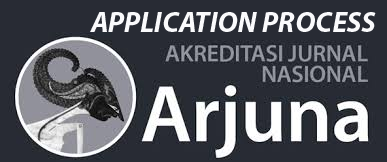Kegiatan Deteksi Dini Pemeriksaan Komposisi Tubuh pada Populasi Usia Produktif
DOI:
https://doi.org/10.56444/pengabdian45.v3i3.1941Keywords:
Body Composition, Obesity, Early DetectionAbstract
Body composition refers to the distribution of fat, muscle, bone, and other tissues in the human body, which is often expressed as a percentage of total body weight consisting of fat mass and lean body mass. Obesity, characterized by excess fat in adipose tissue, poses a significant health risk and is increasing in countries with low and medium mortality rates, especially in metropolitan areas. Factors contributing to this include genetics, a lack of physical activity, socioeconomic status, unhealthy eating patterns, psychosocial factors, smoking, and alcohol consumption. Excess body fat significantly contributes to morbidity and mortality. Although optimal body fat levels vary, excess fat increases the risk of health issues such as joint problems and cardiovascular disease. People widely use bioimpedance analysis (BIA), an efficient, non-invasive method, to assess nutritional status and body composition. This activity uses the PDCA (Plan-Do-Check-Action) method, which is carried out at PT. Narindo, North Jakarta, in the productive age population. The examination results showed that the average levels of total body fat, visceral fat, total subcutaneous fat, total muscle mass were 28.6%; 11%; 22.2%; 28.3%. Early detection of body composition is critical for assessing nutritional and health status as well as diagnosing disease, potentially reducing obesity-related morbidity and mortality.
References
Alexander Halim Santoso, B., Firmansyah, Y., Luwito, J., Edbert, B., Kotska Marvel Mayello Teguh, S., Herdiman, A., Shifa Martiana, C., & Valeri Alexandra, T. (2023). Pengabdian Masyarakat - Pengukuran Indeks Massa Tubuh dan Lingkar Perut dalam Upaya Pemetaaan Obesitas Sentral pada Warga Masyarakat di Desa Dalung, Serang, Banten. SEWAGATI: Jurnal Pengabdian Masyarakat Indonesia, 2(2), 01–08. https://doi.org/10.56910/SEWAGATI.V2I2.596
Borga, M., West, J., Bell, J. D., Harvey, N. C., Romu, T., Heymsfield, S. B., & Dahlqvist Leinhard, O. (2018). Advanced body composition assessment: from body mass index to body composition profiling. Journal of Investigative Medicine : The Official Publication of the American Federation for Clinical Research, 66(5), 1–9. https://doi.org/10.1136/jim-2018-000722
Destra, E., Anggraeni, N., Firmansyah, Y., & Santoso, A. H. (2023). Waist to hip ratio in Cardiovascular Disease Risk : A Review of the Literature. MAHESA : Malahayati Health Student Journal, 3(6), 1770–1781. https://doi.org/10.33024/mahesa.v3i6.10595
Firmansyah, Y., & Santoso, A. (2020). Hubungan Obesitas Sentral Dan Indeks Massa Tubuh Berlebih Dengan Kejadian Hipertensi. Hearty, 8, 1–8. https://doi.org/10.32832/hearty.v8i1.3627
Holmes, C. J., & Racette, S. B. (2021). The Utility of Body Composition Assessment in Nutrition and Clinical Practice: An Overview of Current Methodology. Nutrients, 13(8). https://doi.org/10.3390/nu13082493
Kochman, M., Kasperek, W., Guzik, A., & Drużbicki, M. (2022). Body Composition and Physical Fitness: Does This Relationship Change in 4 Years in Young Adults? International Journal of Environmental Research and Public Health, 19(3). https://doi.org/10.3390/ijerph19031579
Liang, X., Chen, X., Li, J., Yan, M., & Yang, Y. (2018). Study on body composition and its correlation with obesity: A Cohort Study in 5121 Chinese Han participants. Medicine, 97(21), e10722. https://doi.org/10.1097/MD.0000000000010722
Manasa, M. H. S., & Mahadevaswamy, M. R. K. (2023). Obesity and its Effects on Health. Saudi Journal of Nursing and Health Care, 6(1), 16–17. https://doi.org/10.36348/sjnhc.2023.v06i01.004
Więch, P., Chmiel, Z., Bazaliński, D., Sobolewski, M., & Sałacińska, I. (2021). Body Composition and Selected Nutritional Indicators in Healthy Adults-A Cross-Sectional Study. Global Advances in Health and Medicine, 10, 21649561211021790. https://doi.org/10.1177/21649561211021794
Zara Khalid, Muhammad Naveed Babur, Furqan Ahmed Siddiqi, Sana Khalid, Muhammad Ali Arshad Tareen, & Naureen Tassadaq. (2022). Body composition profiling and obesity analysis of healthy adults: a cross-sectional study. Journal of the Pakistan Medical Association. https://doi.org/10.47391/JPMA.4673
Downloads
Published
Issue
Section
License
Copyright (c) 2024 Jurnal Suara Pengabdian 45

This work is licensed under a Creative Commons Attribution-ShareAlike 4.0 International License.













